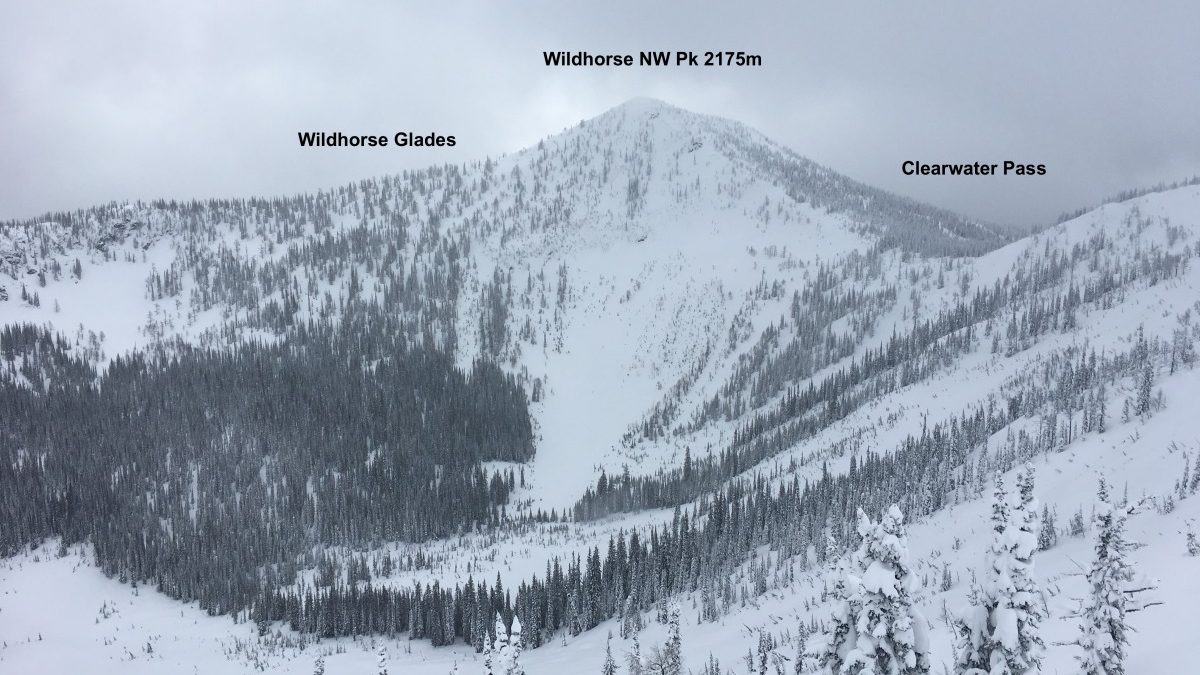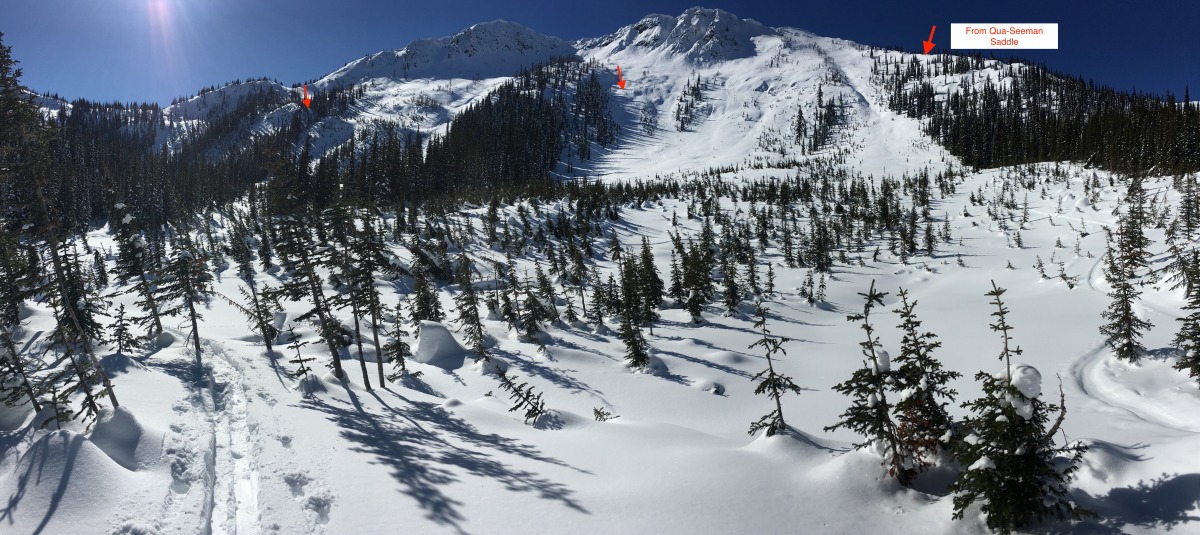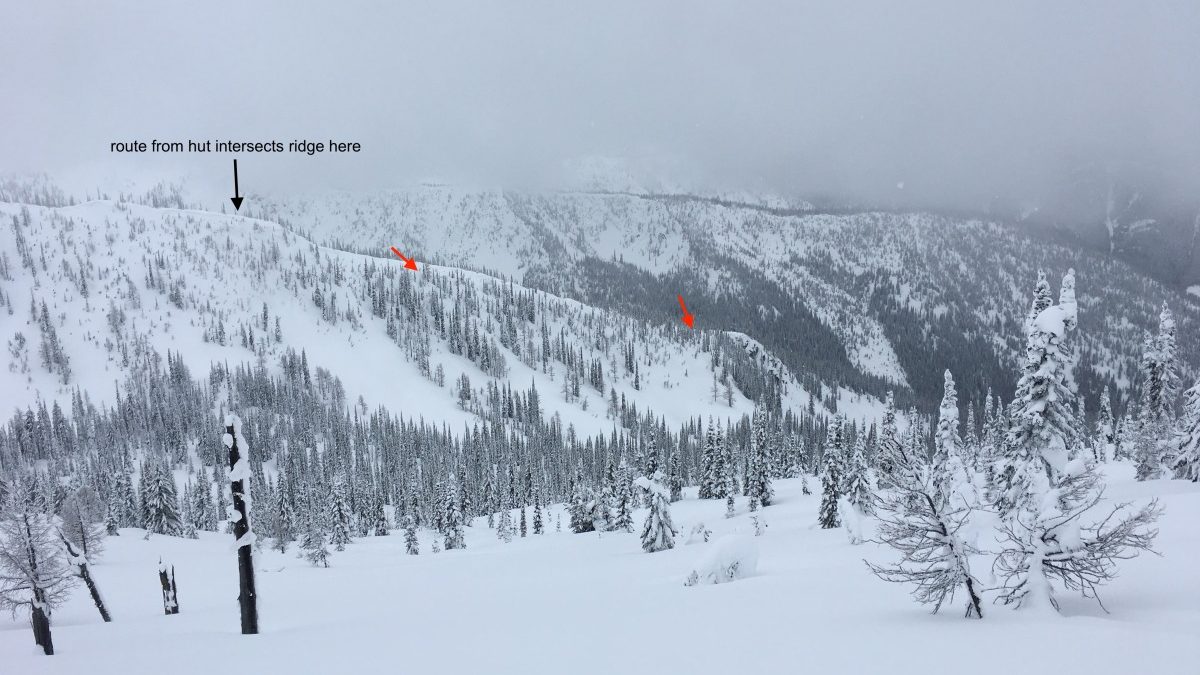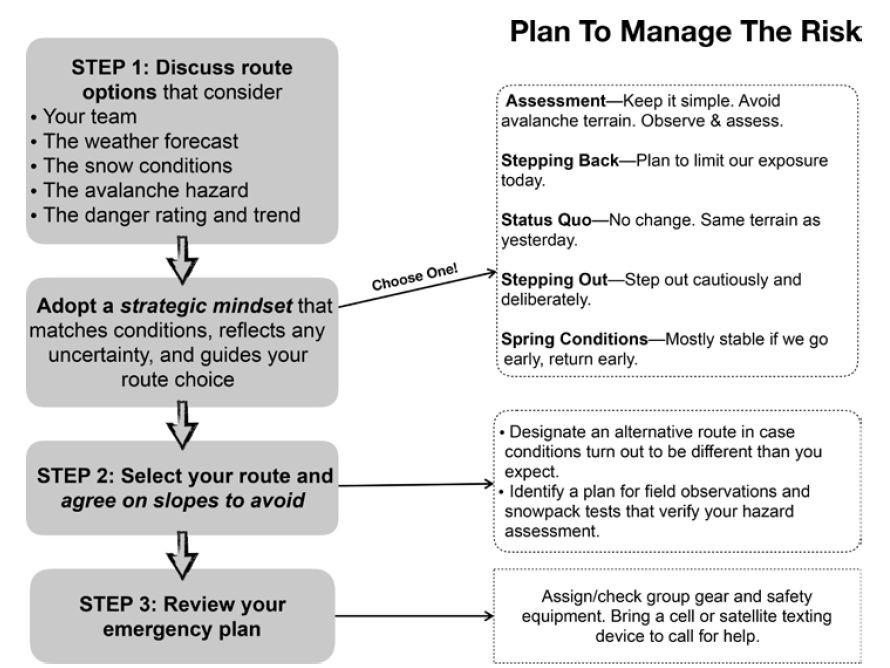
If the team’s objective is a summit, then a clear image of the peak helps to micro-manage terrain — both to minimize exposure to the avalanche hazard, but also connect good ski lines for the down. Reviewing terrain images after reading the bulletin and discussing the day’s terrain mindset helps open or close terrain before the team is in the field. This helps them decide on appropriate terrain choices in a less emotional setting — once they’re staring at three-thousand-foot run, all untracked, it can be difficult to rein it in! And on those days with less avalanche hazard, good photos help a motivated team link the best ski lines — particularly in forested terrain like this.
In the next excerpt from Rob Coppolillo’s The Ski Guide Manual, he offers guidance on the planning process to ensure all members of a group are in the same mindset before heading out for the day. The excerpt refers to the ‘guide meeting’ as a time when this occurs, but it applies to recreational skiers as well. Want more? You can find the rest by, pre-ordering a copy of the book.
A few paragraphs ago we used the vague and sometimes mysterious term “mindset.” Mindset simply refers to a set of beliefs and behaviors that govern how an individual or group approaches the world or a task. For the high-end recreationist and ski guide, let’s customize the concept to a “terrain-use mindset.”
Our terrain-use mindset provides a set of protocols and behaviors that govern our touring on the day. Once we’ve assembled our group, gathered our information and observations, and identified hazards, we identify our terrain-use mindset and let it
help govern our choices of where we tour, what slopes we will ski, and how we plan to travel. It also helps us decide where we will not tour. It is an adopted bias of sorts; some might call it a pre-bias. It defines our approach and mindset toward the terrain. Scholars modify and define “mindset” differently, but let’s stick to the general definition above for our discussion.
Imagine your team of five skiers. Two teammates have a “the summit or death” mindset, while another two trend toward the “I love skiing, but it’s not worth risking an injury” mindset. All sorts of conflicts, disconnects, and problems jump to mind, right? What’s your objective on the day? What sounds like a fun tour? What conditions would make you turn back? With conflicting mindsets, you can see it might be impossible to even plan a tour, let alone pull it off in the field!
Herein lies one of the strengths of a guide meeting: identifying potential problems in a dispassionate setting. An effective guide meeting, performed in an environment of honesty and respect, will reveal problems, mistakes, and oversights before you’re in the field. Any “desire-driven” activity immediately introduces a bias to that activity. Ski touring, surfing, car shopping—everybody loves to do something.
For most of us, that something is backcountry touring. We share a solid case of mad pow disease: We all want to ride deep, light snow on interesting terrain. Modern neuroscience and psychology says that because of this bias toward skiing the goods, our brains tilt that direction and we unconsciously put a finger on the scale of any decision between “safe enough to ski?” and “should we bail?”

Paired with a topo map, a guidebook description, and Google Earth, a good terrain photo gives a sense of how easy or difficult it will be to avoid avalanche-prone terrain. This photo of the approach to Clearwater Pass, near Nelson, BC, shows huge terrain above, capable of producing large, destructive avalanches. It also shows vegetation clues of past avalanching. If the team’s mindset on the day is defensive or stepping back, then the photo captures just the type of terrain to avoid. Red arrows indicate geographic landmarks, ski runs, or spots to avoid.
Knowing this, in an effort to remove some of that mad pow bias, we do our guide meeting before we’re looking down 1,000 meters of untracked snow. We choose a mindset on the day, which helps us go one step further— pre-biasing ourselves. Different mindsets give us different sets of rules and behaviors for each day touring. Professional ski-touring operations use the term “strategic mindset”; they literally select a mindset from a list, and that mindset colors the guides’ and pilots’ actions on the day. Chances are you already have at least a vague sense of applying mindset.
When you leave the trailhead or hut, are you feeling on the defensive (on a high-danger day, for example) or are you and your team stoked for conditions and ticking a big line (low danger just after a big snowfall)? Those are mindsets, but the question needs to be: What is our mindset, given the conditions? Does everyone have that same mindset? How did we arrive at it? Can we stick to it during our tour?
In your guide meeting, once you’ve gone over weather and avalanche conditions, the group then selects a mindset on the day, incorporating all the information you have (including on the team). I suggest creating several terrain-use mindsets, such as “avoid avalanche terrain,” “step out carefully,” “step back,” “status quo,” and “go early, return early.” You notice in the Guide Meeting chart above that Colin Zacharias poses these as questions in an effort to prompt a discussion and self-reflection. Presented with a decision in the field, like avoiding a particular slope, for example, we ask ourselves, Are we “avoiding avalanche terrain”?

Another terrain image from a guide’s run atlas, this one depicting several drop-in points along a ridge. A teammate or colleague onsighting this terrain will appreciate good imagery, helping them find the best turns and get oriented. On a day where a team has a “stepping out cautiously” mindset, pushing into slightly more exposed terrain like this might be appropriate and good photos will help.
Consider pausing to let each member select a mindset on the day, before deciding as a team. This prevents less-experienced teammates from deferring to senior members and their judgments. At decision points, let each teammate revisit the mindset and ask him/herself: “Are we sticking to our plan? Does this decision fit our terrain-use mindset on the day?” Then discuss as a team.
As Dr. Daniel Kahneman writes in his bestseller Thinking, Fast and Slow, “The proper way to elicit information from a group is not by starting with a public discussion but by confidentially collecting each person’s judgment.” What we are doing is harnessing a cognitive bias to work for us—in effect, we are employing anchor bias.
A terrain mindset anchors our behaviors and decisions to some “rules of engagement” on the day, all in a dry, comfortable setting, away from wind, cold, sun, powder, and that oh-so-perfect looking slope beneath your skis—before we’re subject to emotions, fatigue, group stoke, or pressure from other skiers.
Rob Coppolillo is a mountain guide and writer, based on Vashon Island, in Puget Sound. He’s the author of The Ski Guide Manual.

